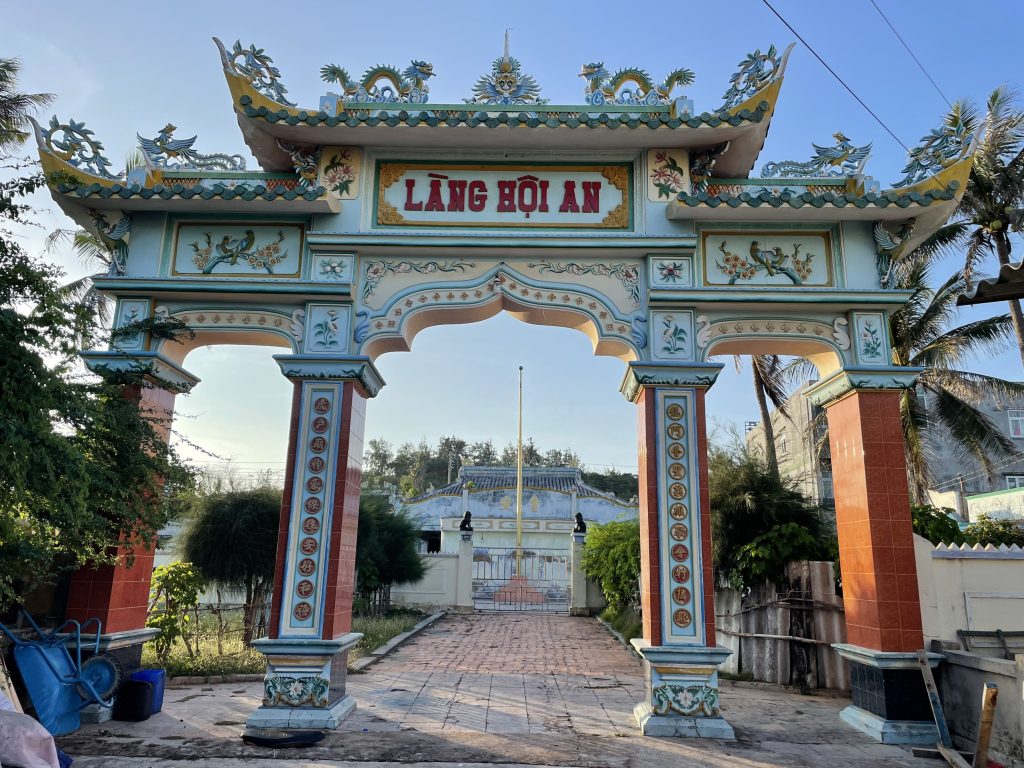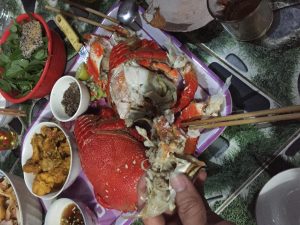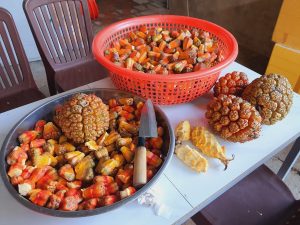Hoi An Village Communal House in Phu Quy is located in Tam Thanh commune, Hoi An village. It was initially built in the late 18th century, and in 1812, the communal house was renovated to become more magnificent and grand.
The Communal House, known as “Van Hoi An,” was constructed in the late 18th century to worship the City God, the Nam Hai deity, and the ancestors of the village, according to the beliefs of the residents engaged in farming and fishing.
The Communal House and Van Hoi An are situated in Triệu Dương Hamlet, Tam Thanh commune. This is a folk religious structure that serves two main functions: worshiping the deities associated with the spiritual and cultural life of the Vietnamese community, including the City God who protects and supports the village community, and the Nam Hai deity (whale or Lord Fish) who rescues fishermen at sea, according to the traditional beliefs of coastal residents. Additionally, the site also worships the ancestors who played a significant role in establishing the village, building the communal house, and contributing to the community in the past.
Every year, at the Hoi An Village Communal House, three main ceremonial rituals take place during the spring and autumn seasons, following the custom of “seeking blessings for spring and receiving autumn’s gratitude.” There is also a memorial ceremony held on the 1st day of the 6th lunar month. The Hoi An Village Communal House was classified as a provincial-level historical and cultural relic in Decision No. 2155/QD-UBND on October 30, 2012, by the People’s Committee of Binh Thuan province.









